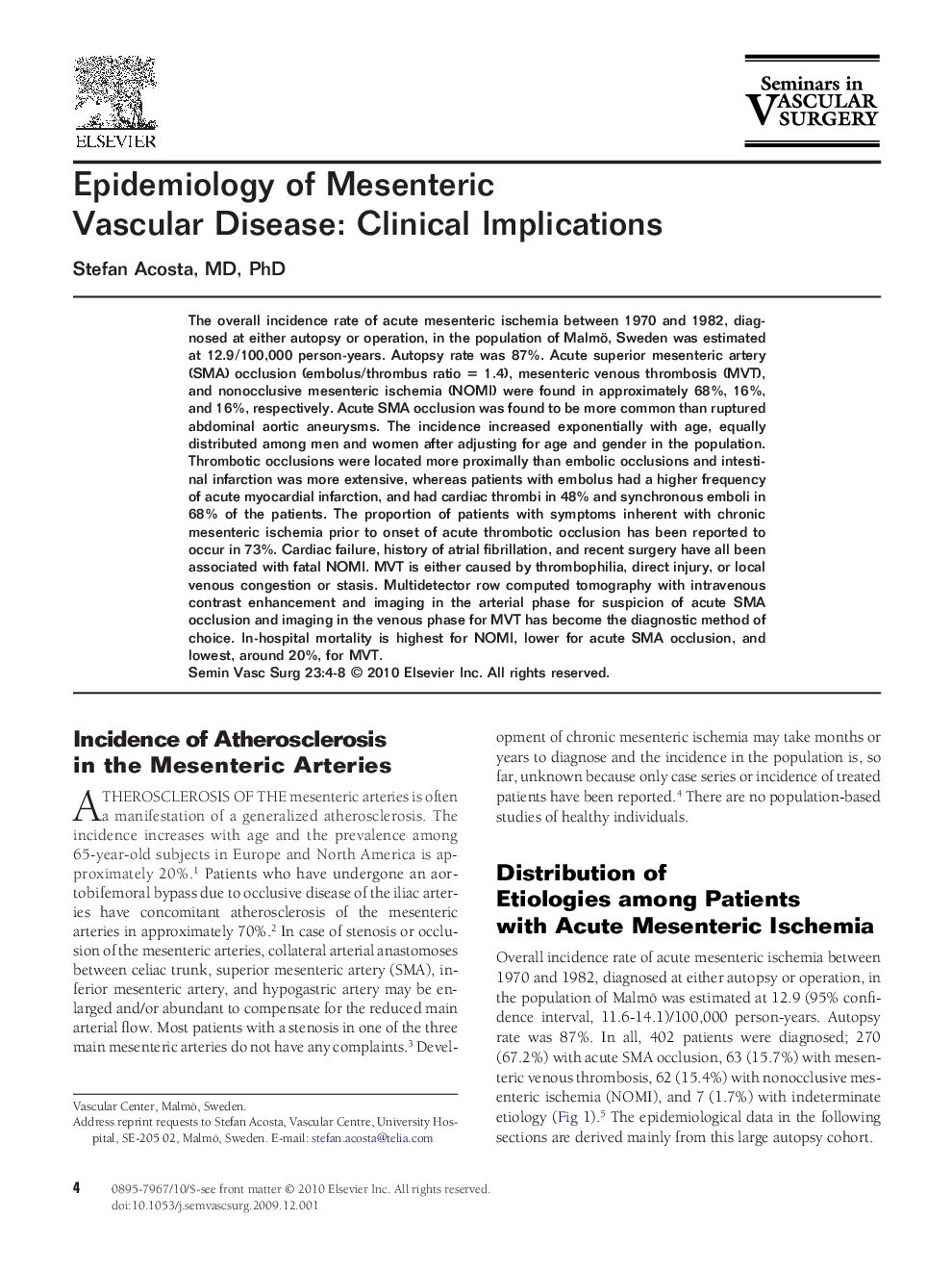| Article ID | Journal | Published Year | Pages | File Type |
|---|---|---|---|---|
| 3026482 | Seminars in Vascular Surgery | 2010 | 5 Pages |
The overall incidence rate of acute mesenteric ischemia between 1970 and 1982, diagnosed at either autopsy or operation, in the population of Malmö, Sweden was estimated at 12.9/100,000 person-years. Autopsy rate was 87%. Acute superior mesenteric artery (SMA) occlusion (embolus/thrombus ratio = 1.4), mesenteric venous thrombosis (MVT), and nonocclusive mesenteric ischemia (NOMI) were found in approximately 68%, 16%, and 16%, respectively. Acute SMA occlusion was found to be more common than ruptured abdominal aortic aneurysms. The incidence increased exponentially with age, equally distributed among men and women after adjusting for age and gender in the population. Thrombotic occlusions were located more proximally than embolic occlusions and intestinal infarction was more extensive, whereas patients with embolus had a higher frequency of acute myocardial infarction, and had cardiac thrombi in 48% and synchronous emboli in 68% of the patients. The proportion of patients with symptoms inherent with chronic mesenteric ischemia prior to onset of acute thrombotic occlusion has been reported to occur in 73%. Cardiac failure, history of atrial fibrillation, and recent surgery have all been associated with fatal NOMI. MVT is either caused by thrombophilia, direct injury, or local venous congestion or stasis. Multidetector row computed tomography with intravenous contrast enhancement and imaging in the arterial phase for suspicion of acute SMA occlusion and imaging in the venous phase for MVT has become the diagnostic method of choice. In-hospital mortality is highest for NOMI, lower for acute SMA occlusion, and lowest, around 20%, for MVT.
